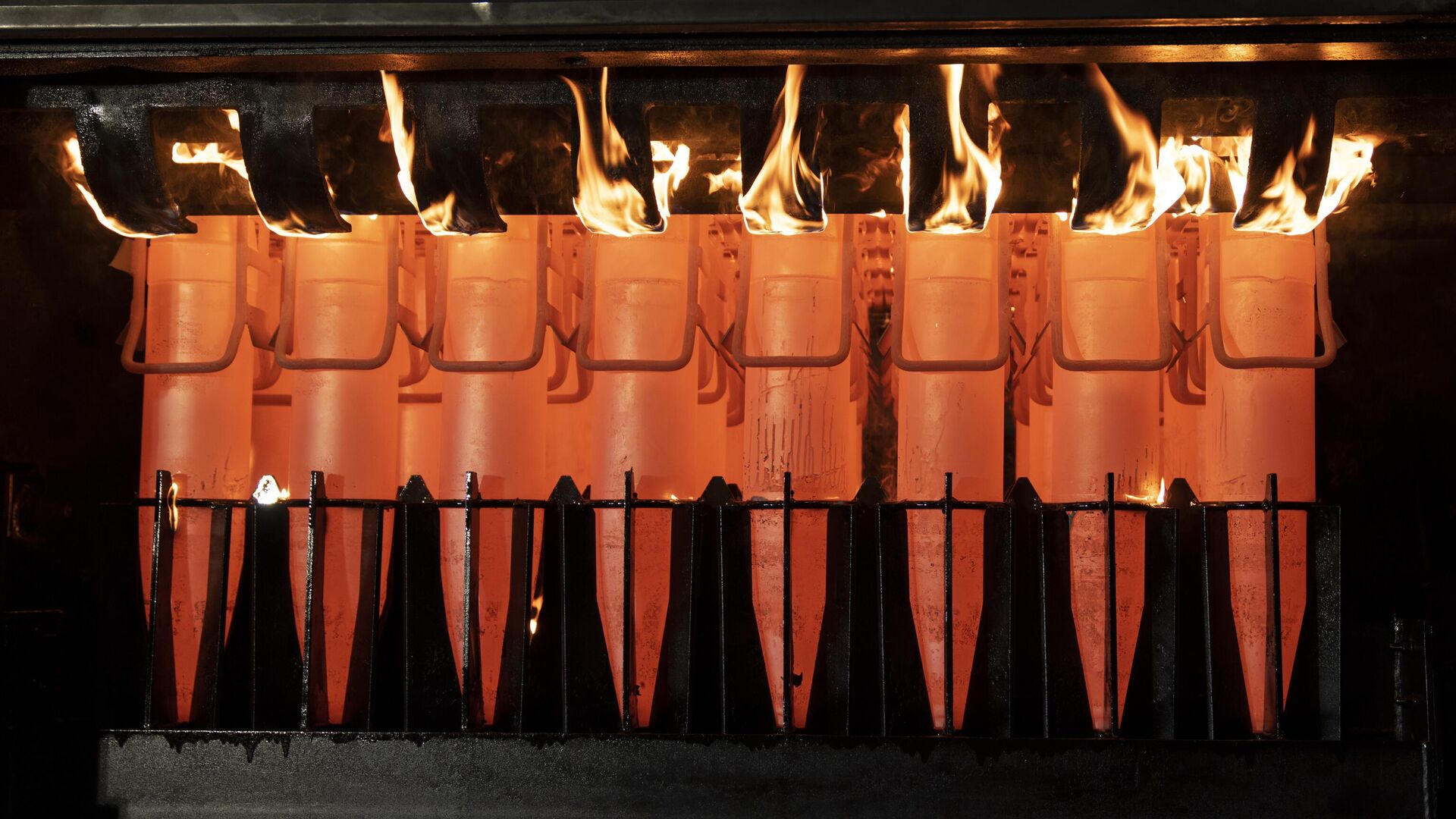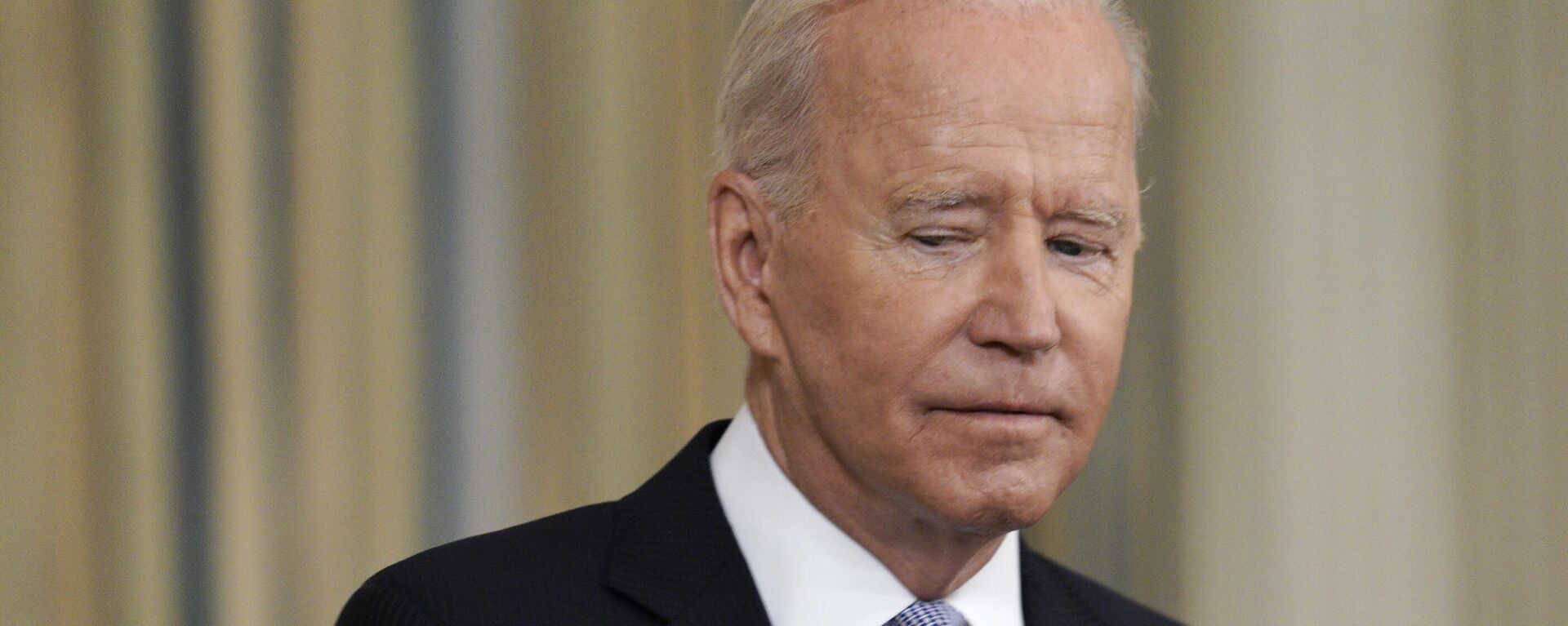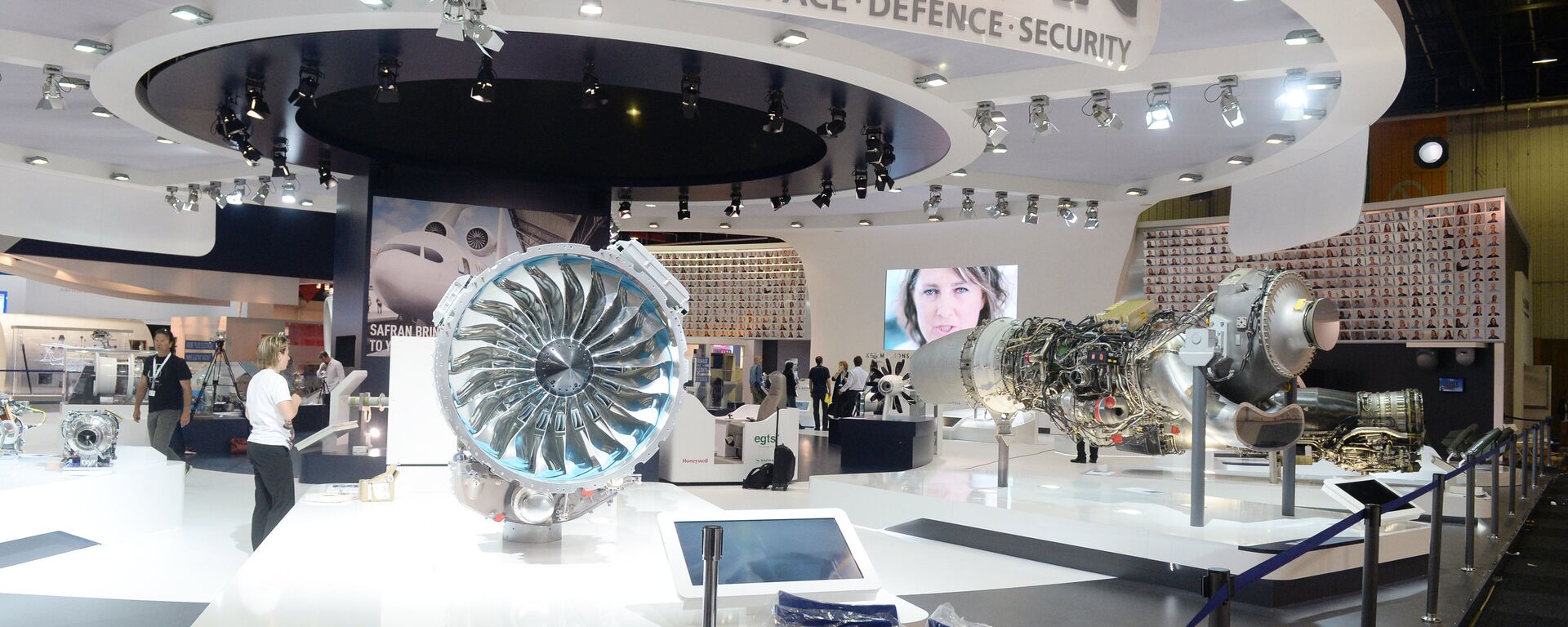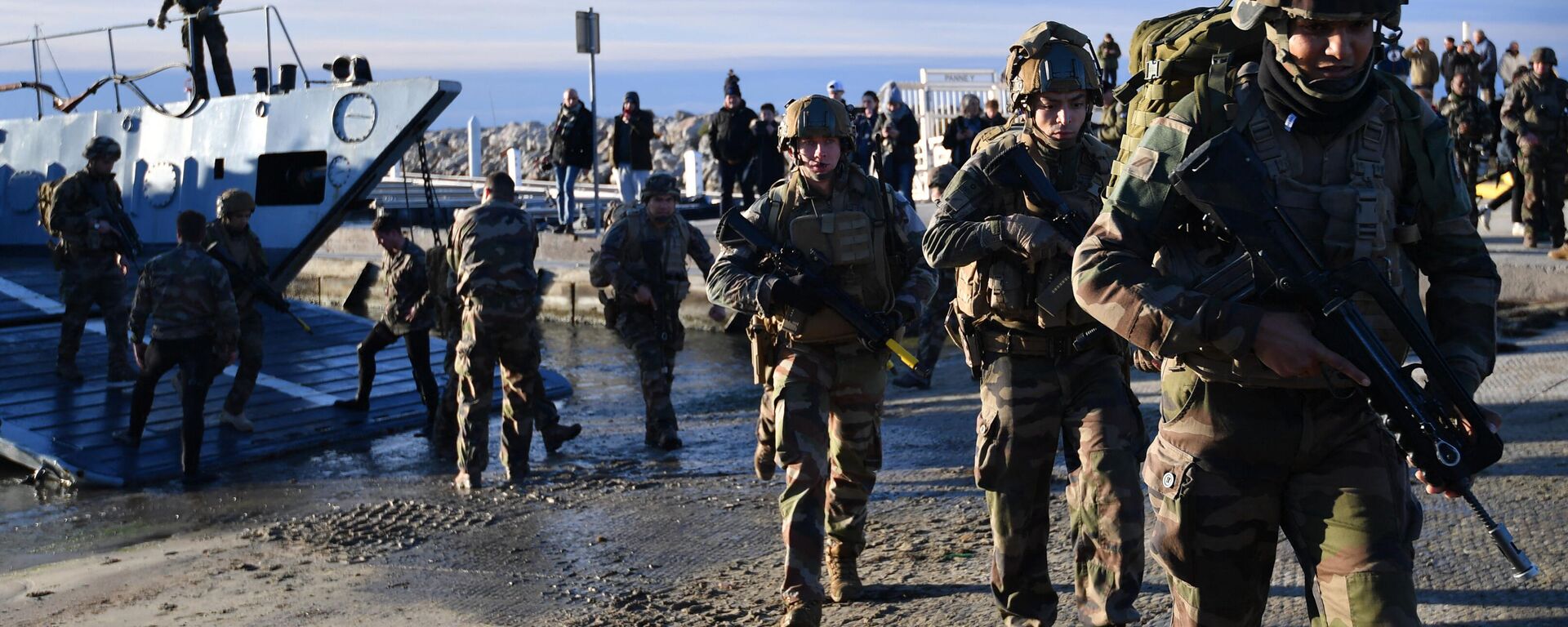https://sputnikglobe.com/20230710/us-europeans-depleted-their-weapons-stockpiles-fighting-russia-in-ukraine-1111797051.html
US, Europeans ‘Depleted’ Their Weapons Stockpile Fighting Russia in Ukraine
US, Europeans ‘Depleted’ Their Weapons Stockpile Fighting Russia in Ukraine
Sputnik International
President Biden and other officials have officially let slip that the US defense industrial base has run into difficulties replenishing the tens of billions of dollars in weapons sent to Ukraine to fight Russia. Asked for comment, retired US Army Major General Paul E. Vallely explained why this is a problem that isn’t going to go away anytime soon.
2023-07-10T19:58+0000
2023-07-10T19:58+0000
2023-07-10T20:26+0000
military
joe biden
john kirby
nato
rheinmetall
us army
germany
ukraine
russia
https://cdn1.img.sputnikglobe.com/img/07e7/04/1c/1109914558_0:160:3072:1888_1920x0_80_0_0_da0b8ee93ca3478f08511695ca41af3e.jpg
US President Joe Biden has taken flak over an explanation justifying the deployment of cluster munitions to Ukraine in which he admitted both Kiev and Washington are running out of ordinary 155-millimeter howitzer shells. “And so, what I finally did, took the recommendation of the Defense Department, to not permanently, but to allow for, in this transition period, where we have more 155 weapons, these shells for Ukrainians, to provide them with something that has a very low dud rate,” Biden said.The president’s comments were echoed by National Security Council spokesman John Kirby, who said in a Sunday chat show that the US was running low on howitzer rounds.The Ukrainians “are using artillery at a very accelerated rate, many thousands of rounds per day. This is literally a gun fight all along - from the Donbass all the way down towards Zaporozhye and Kherson. And so they’re running out of inventory,” Kirby said.Under Secretary of Defense for Policy Colin Kahl made a similar point on Friday, telling reporters Washington was looking to “bridge” a gap that exists between Ukrainian artillery round consumption and US and European production using cluster rounds.“[Russian President] Vladimir Putin has a theory of victory, okay? His theory of victory is that he will outlast everybody. He’ll outlast the Ukrainians, he’ll outlast the United States, he’ll outlast the Europeans,” a flustered Kahl said. “That’s why President Biden has been clear that we’re going to be with Ukraine as long as it takes and why we are signaling that we will continue to provide Ukraine with the capabilities that will keep them in the fight.”European politicians and weapons industry executives have expressed similar sentiments in recent days, telling business media, mostly anonymously, that they have been flooded with orders and cash but lack the guaranteed state defense orders and subsidies they would like to see before splurging on expanded production capabilities, which would take three to five years to deliver. Some governments have yet to commit to such long-term contracts, questioning whether expanded defense production capabilities will be needed so far down the line.Europe’s defense sector also faces problems ranging from shortages of skilled workers to component and resource scarcity, bureaucratic red tape and hesitation by banks to give loans to weapons firms out of fears that doing so may impact their environmental, social and governance ratings.Europe reportedly has the capacity to produce about 300,000 155-mm shells per year, but upping production has been throttled, along with the above-mentioned factors, by a lack of propellant powder. Regional defense giant Rheinmetall maintains two production sites and is planning an expansion at two others, one in Hungary and another in Germany. But negotiations on the German production site have reportedly broken down due to the company’s request for generous subsidies, which Berlin is hesitant to provide. A Rheinmetall spokesman told media that if “the capacity for explosives and for propellant powder in Europe is not expanded soon,” the region will have a “very difficult” time meeting demand.Money Isn’t EverythingThe US and Europe may have the military budgets which far outstrip those of their global rivals, but there are multiple factors helping to explain their depletion and inability to expand production, retired. Major General Vallely, the chairman of the Stand Up America Foundation, a US advocacy and non-profit, told Sputnik.“And the third reason is the amount that we have sent into Ukraine, including what we called ‘prepositioned’ equipment in Europe. Those resources are depleted. So the American defense industry can’t keep up with demand now. We don’t have the manufacturing capability to keep up with what’s being used and what is needed in the future. The same goes for the European countries,” the senior officer said, pointing out that much of the weapons and equipment given to Kiev over the past year-and-a-half have been destroyed.Vallely also pointed to political, economic and social factors to account for the shortfall, saying many NATO countries, particularly in Europe, “are sort of reluctant” to keep pumping their military equipment into Ukraine with no end in sight.Major European NATO powers such as Germany, Italy and the UK have spent months warning that the stocks of weapons they have left after splurging on Ukraine would be enough to withstand just “48-72 hours” of combat in the event of a surprise invasion or other major conflagration. In the UK, defense officials complained privately back in January that the military had been “hollowed out” by arms shipments to Kiev, and London’s reluctance to up defense expenditures.In spite of talk among NATO members about record defense budgets, Vallely doesn’t expect the alliance to be able to substantially ramp up production capabilities over the coming months and years.On top of that are resource constraints, including the rare-earth minerals the US has come to rely on China for but which Beijing has recently indicated it would be trimming down amid the ongoing trade war with Washington, Vallely said.
https://sputnikglobe.com/20230710/oh-no-joe-us-low-on-ammo-biden-skewered-for-letting-cat-out-of-the-bag-1111786601.html
https://sputnikglobe.com/20230325/putin-wests-weapons-supply-to-ukraine-wont-be-enough-to-outgun-russia-1108787875.html
https://sputnikglobe.com/20230617/defense-firms-not-invited-to-nato-industry-reception-claim-unfair-treatment-1111237271.html
https://sputnikglobe.com/20230312/appalling-state-of-european-defense--its-dependence-on-us-laid-bare-by-ukrainian-conflict-1108303731.html
https://sputnikglobe.com/20230704/has-china-just-checkmated-the-us-by-banning-rare-earth-exports-1111663181.html
germany
ukraine
russia
Sputnik International
feedback@sputniknews.com
+74956456601
MIA „Rossiya Segodnya“
2023
News
en_EN
Sputnik International
feedback@sputniknews.com
+74956456601
MIA „Rossiya Segodnya“
Sputnik International
feedback@sputniknews.com
+74956456601
MIA „Rossiya Segodnya“
us, united states, europe, nato, ukraine, weapons, ammunition, stockpiles
us, united states, europe, nato, ukraine, weapons, ammunition, stockpiles
US, Europeans ‘Depleted’ Their Weapons Stockpile Fighting Russia in Ukraine
19:58 GMT 10.07.2023 (Updated: 20:26 GMT 10.07.2023) Biden and other officials have officially let slip that the US defense industrial base has run into difficulties replenishing the tens of billions of dollars in weapons sent to Ukraine to fight Russia. Asked for comment, retired US Army Major General Paul E. Vallely explained why this is a problem that isn’t going to go away anytime soon.
US President Joe Biden has taken flak over an explanation justifying the deployment of cluster munitions to Ukraine in which he admitted both Kiev and Washington are running out of ordinary 155-millimeter howitzer shells.
“This is a war relating to munitions. And they’re running out of that ammunition, and we’re low on it,” Biden said in a televised Friday interview, shortly after Washington’s announcement on the expedited delivery of M864 Dual-Purpose Improved Conventional Munition (DPICM) cluster bombs to Ukraine.
“And so, what I finally did, took the recommendation of the Defense Department, to not permanently, but to allow for, in this transition period, where we have more 155 weapons, these shells for Ukrainians, to provide them with something that has a very low dud rate,” Biden said.
The president’s comments were echoed by National Security Council spokesman John Kirby, who
said in a Sunday chat show that the US was running low on howitzer rounds.
The Ukrainians “are using artillery at a very accelerated rate, many thousands of rounds per day. This is literally a gun fight all along - from the Donbass all the way down towards Zaporozhye and Kherson. And so they’re running out of inventory,” Kirby said.
“We are trying to ramp up our production of the kind of artillery shells that they’re using most. But that production rate is still not where we want it to be. So we’re going to send these additional artillery shells that have cluster bomblets in them to help bridge the gap as we ramp up production of the normal 155 artillery shells,” the spokesman added.
Under Secretary of Defense for Policy Colin Kahl made a similar point on Friday,
telling reporters Washington was looking to “bridge” a gap that exists between Ukrainian artillery round consumption and US and European production using cluster rounds.
“[Russian President] Vladimir Putin has a theory of victory, okay? His theory of victory is that he will outlast everybody. He’ll outlast the Ukrainians, he’ll outlast the United States, he’ll outlast the Europeans,” a flustered Kahl said. “That’s why President Biden has been clear that we’re going to be with Ukraine as long as it takes and why we are signaling that we will continue to provide Ukraine with the capabilities that will keep them in the fight.”
European politicians and weapons industry executives have expressed similar sentiments in recent days,
telling business media, mostly anonymously, that they have been flooded with orders and cash but lack the guaranteed state defense orders and subsidies they would like to see before splurging on expanded production capabilities, which would take three to five years to deliver. Some governments have yet to commit to such long-term contracts, questioning whether expanded defense production capabilities will be needed so far down the line.
Europe’s defense sector also faces problems ranging from shortages of skilled workers to component and resource scarcity, bureaucratic red tape and hesitation by banks to give loans to weapons firms out of fears that doing so may impact their environmental, social and governance ratings.
In Germany, Europe’s biggest industrial economy, the defense ministry requires permission from parliament for any defense order about 25 million euros – enough for about 7,500 155-mm shells – which wouldn’t last Ukraine even one day amid the current intensity of fighting.
Europe reportedly has the capacity to produce about 300,000 155-mm shells per year, but upping production has been throttled, along with the above-mentioned factors, by a lack of propellant powder. Regional defense giant Rheinmetall maintains two production sites and is planning an expansion at two others, one in Hungary and another in Germany.
But negotiations on the German production site have reportedly broken down due to the company’s request for generous subsidies, which Berlin is hesitant to provide. A Rheinmetall spokesman
told media that if “the capacity for explosives and for propellant powder in Europe is not expanded soon,” the region will have a “very difficult” time meeting demand.
The US and Europe may have the military budgets which
far outstrip those of their global rivals, but there are multiple factors helping to explain their depletion and inability to expand production, retired. Major General Vallely, the chairman of the Stand Up America Foundation, a US advocacy and non-profit,
told Sputnik.
“As you know, when the Americans surrendered in Afghanistan, we left $85 billion-worth of equipment, ammunition, guns, tanks, helicopters, artillery. $85 billion is a lot. That would arm an entire country for years,” Vallely explained. Secondly, the US defense sectors “sells a lot of equipment to other countries – some 50 different countries,” which means not all its resources can be concentrated on one task, like flooding arms into Ukraine.
“And the third reason is the amount that we have sent into Ukraine, including what we called ‘prepositioned’ equipment in Europe. Those resources are depleted. So the American defense industry can’t keep up with demand now. We don’t have the manufacturing capability to keep up with what’s being used and what is needed in the future. The same goes for the European countries,” the senior officer said, pointing out that much of the weapons and equipment given to Kiev over the past year-and-a-half have been destroyed.
Vallely also pointed to political, economic and social factors to account for the shortfall, saying many NATO countries, particularly in Europe, “are sort of reluctant” to keep pumping their military equipment into Ukraine with no end in sight.
Instead, they’ve actually “slowed down their production, I think, and also the amount of supplies that they’re giving Ukraine, because they want to keep a lot of that, at least some for themselves. So those are all reasons why we see this shortage and it’s going to continue,” he said.
Major European NATO powers such as
Germany,
Italy and the
UK have spent months warning that the stocks of weapons they have left after splurging on Ukraine would be enough to withstand just
“48-72 hours” of combat in the event of a surprise invasion or other major conflagration. In the UK, defense officials complained privately back in January that the military had been “hollowed out” by arms shipments to Kiev, and London’s reluctance to up defense expenditures.
In spite of talk among NATO members about record defense budgets, Vallely doesn’t expect the alliance to be able to substantially ramp up production capabilities over the coming months and years.
“I don’t think they want to. It costs the countries a lot of money to build this equipment. And you have an ailing economy in Europe and the United States. They can print all the money they want to, but still you have to build these things and it takes a lot of time,” he said.
On top of that are resource constraints, including the rare-earth minerals the US has come to rely on China for but which Beijing has recently indicated it would be trimming down amid the ongoing trade war with Washington, Vallely said.







